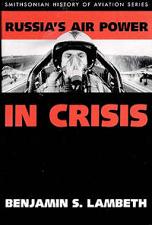
Russia’s Air Power in Crisis
Benjamin S. Lambeth
233 pages including index
published in 1999
The end of the Cold War was strange, because it wasn’t the nuclear holocaust we all imagined it was going to be, the final confrontation between the free west and the communist east. Instead it ended with a whimper, not a bang, as the Soviet empire collapses from the inside. With it crumbled the Russian army, which went from being an unstoppable menace to a laughing stock in the space of less than a year. Budgets were slashed, careful gathered stockpiles of weapons were destroyed or sold, units were brought back from Eastern Europe and when the USSR itself split, suddenly not just hte army was split over a dozen different countries, but also its supporting infrastructure of weapon plants, repair depots and design bureaus…
The various new Russian army branches therefore had to meet formidable challenges in the post-Soviet era, perhaps none more so than its airforces. It’s this that’s the subject of Russia’s Air Power in Crisis, which looks at these problems through a somewhat American lens. This is most visible in the constant references the author makes to the role American airpower played during the First Gulf War and the impression this made on the Russians. More subtly, it’s also visible in the assumption of how airpower should be used, in that a proper airforce should be like the USAF and adhere to its philosophy. It speaks for Lambeth that he recognises this tendency in himself, when he discusses what might have been the outcome if the balloon had gone up and the Soviet and NATO airforces had met each other in the skies above Western Europe.